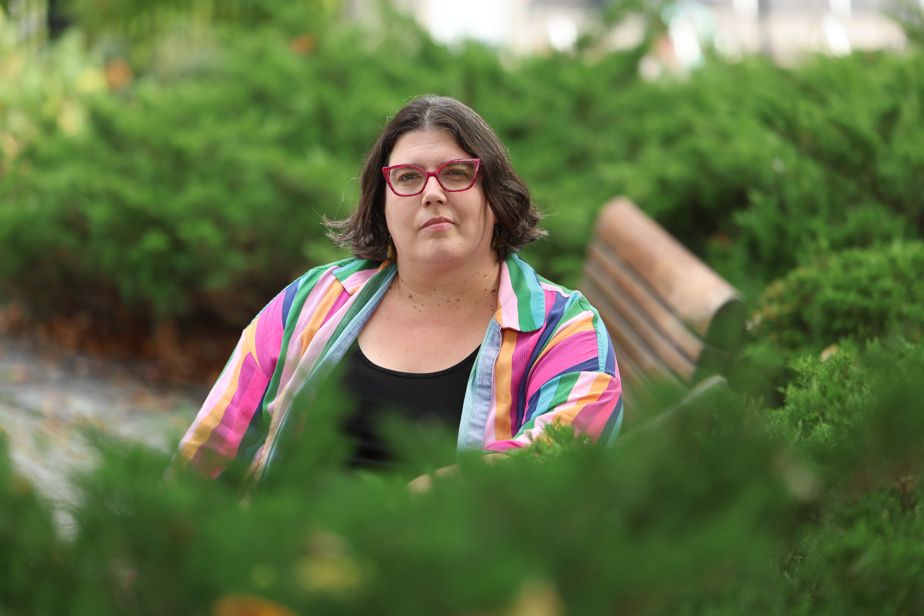In Quebec, adoption through the mixed banking program is the most widespread form of adoption. However, its existence and its workings are unknown to the public, notes author Catherine Voyer-Léger. The one who navigated this system for eight years to adopt her daughter recounts in a work that is both intimate and informative the ups and downs of this journey towards parenthood.
“We hesitated for a long time to put “mixed bank” in the title, because we said to ourselves that no one knows what it is,” confides, in an interview, the author ofAdoption – The twelve labors of the mixed bank. However, in his eyes, it is time to “make the reality of this program better known”, the creation of which dates back to the 1980s.
So, what is the blended banking program? “It allows children placed under the Department of Youth Protection (DPJ) whose chances of returning to their family of origin are low to be entrusted to host families inclined to eventually adopt them,” explains Catherine Voyer-Léger, at the beginning of the book.
Throughout the pages, the author of several stories and essays, including Knotted And Take shaperecounts the long process she went through to realize her dream of adopting a child alone. “My primary desire was to have the privilege of supporting a child in their learning and life journey. And that has never disappointed me. Not that part,” she writes.
The disappointment came from the systemic issues and bureaucratic heaviness which had a negative impact on his career.
There is no such mixed banking story. Just based on my story, I can’t say: “This is what needs to be improved!” But I’ve spoken to a lot of families, and what we see is that there is a lack of services.
Catherine Voyer-Léger
“When I was introduced to the child who would become my daughter, I was warned about many issues that could impact her development,” remembers the author.
However, from the moment she welcomed the girl, aged 15 months at the time, into her home, the DPJ workers no longer spoke to her about these issues, despite behaviors associated with attachment problems. , including countless crises. “When I tried to raise red flags, I was told, ‘It’s age. You need to work on your parenting skills.” »
She continues: “There is a troubling disconnect there. At the start, I was told that she could carry with her the stigma of what she experienced. But when I started to see the problems emerging, I was no longer listening. »
Calls for help
Catherine Voyer-Léger believes that families in the mixed bank should be better informed of the emotional development issues often experienced by adopted children. In his eyes, they should immediately benefit from support.
There is a specificity among adopted children. […] Behaviors linked to abandonment and attachment. Not in all adopted children, but in many of them. And we talk about it very, very little. We are told that love heals everything. But no, unfortunately, love does not cure everything.
Catherine Voyer-Léger
His “crys for help” were finally heard at the end of summer 2021, almost four years after the arrival of his daughter in his life. Why did the family suddenly have access to resources? Because she had just moved to Montreal. His file had therefore changed region. “It allowed me to see that there are regions where resources are really more developed than others. […] Depending on where a child is born in Quebec, he or she will not obtain the same services from the DPJ. It seems quite serious to me,” raises Catherine Voyer-Léger.
If she had received better support from the start, she believes she would have understood more quickly that she was raising a child in need of special care. “I would have made the decision sooner to put my career on hold, to work less, to find more time, energy and availability for it. That’s my biggest regret,” she confides.
Advice for adopting parents
What advice would she give to people considering adopting a child through the mixed bank program? She would tell them to think about different scenarios that could happen. For example, DPJ workers ask the candidate family if they have a support network. “I said yes, I have a great support network. […] But who takes over if, as happened to me, someone calls you when your child is in kindergarten to tell you that they can’t send him to school full time? »
From 200 to 250
Number of children adopted in Quebec each year
Source : Adoption – The twelve labors of the mixed bank
We must ask ourselves if we are ready for the family of origin to remain in the child’s life, she also gives as an example.
She would also invite future parents to ask themselves if they are ready to fight for services. “I wasn’t combative enough,” she believes, looking back.

Adoption – The twelve labors of the mixed bank
Ink scent
288 pages
